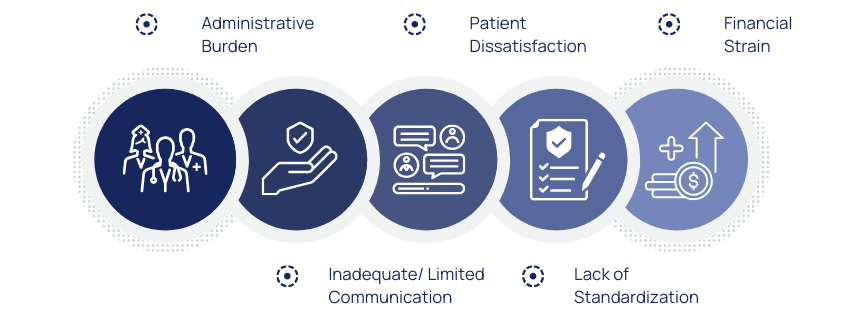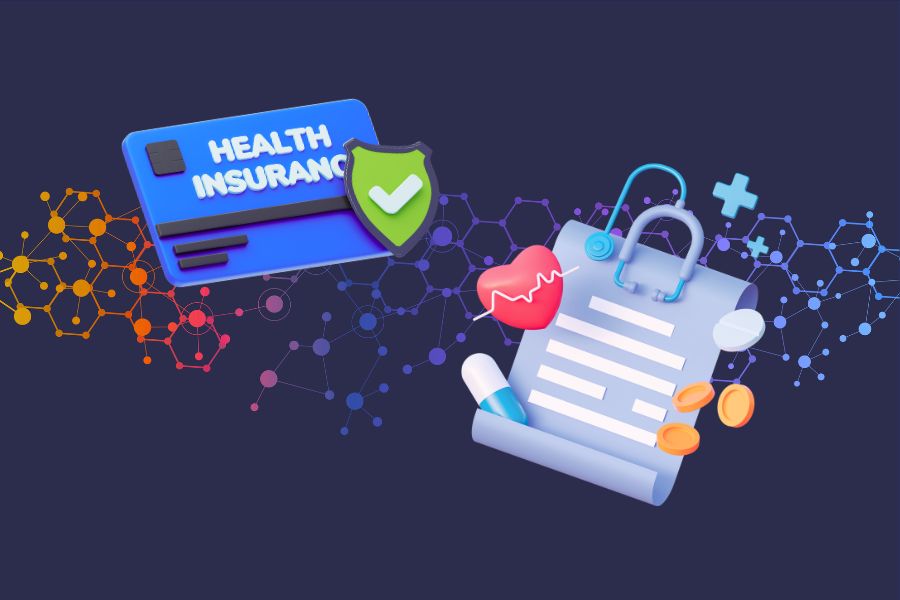Prior authorization (PA) is a cost-control process insurance companies use to determine if they will cover a prescribed procedure, service, or medication. It was originally intended to ensure medical necessity and manage expenses.
The Hidden Bottleneck in Healthcare
A recent report by the American Medical Association found that physicians complete an average of 45 prior auth requests per week, taking nearly two full workdays to process. The burden of administrative tasks is now a top contributor to physician burnout, with inefficiencies stemming directly from outdated systems and fragmented communications.
Prior authorization (PA) was designed as a safeguard, a tool to control costs and ensure medical necessity before treatments or medications are approved by insurers. On paper, it’s a sound approach to resource management. In practice, however, it has become one of the most frustrating administrative hurdles in healthcare.
For patients, it delays care. For providers, it creates a paperwork nightmare. And for the system as a whole, it often leads to inefficiencies that undermine the very goals it was meant to serve. What was once a tool for optimization has become a structural flaw in urgent need of fixing. Fixing prior auth is a tech upgrade as well as a strategic move.

The Problem with Traditional Prior Authorization
Many healthcare executives agree: the traditional PA process is no longer sustainable. According to a McKinsey report, streamlining prior auth using digital tools could reduce payer-provider friction, lower costs by up to $13 billion annually, and significantly improve patient satisfaction, serving asa technological fix, and a strategic business transformation.
The American Medical Association reports that 94% of physicians experience delays in patient care due to prior authorization. Even more troubling, 30% say that these delays have led to serious adverse events for patients. The manual, outdated nature of the current system slows down treatment approvals and adds hours of administrative burden for clinicians each week.
Redundant, Complex, and Fragmented
The current PA process is often redundant, requiring repeated submissions, manual reviews, as well as back-and-forths between insurers, providers, and pharmacies. Each payer has their own set of rules, and each form requires different information. It’s a fragmented system that lacks interoperability and standardized workflows- ripe for disruption.
Interoperability, a long-standing challenge in healthcare IT, is also addressed by these integrated systems. Using Fast Healthcare Interoperability Resources (FHIR) standards, platforms can now support secure, standardized data sharing, enabling real-time updates and reducing redundant requests. This interoperability also strengthens audit readiness and compliance alignment- particularly important as payers and providers are increasingly held accountable for performance metrics.
The Technology That’s Actually Fixing This
Automation and AI as Game Changers
By automating repetitive tasks and intelligently routing authorization requests, healthtech platforms can reduce PA approval times from days or weeks to mere hours. AI-driven systems can scan documentation, predict outcomes, auto-fill forms, and even flag missing data before submission, reducing human error and denials.
Data Integration Across Systems
Momentum is also growing among industry leaders. CVS Health, UnitedHealthcare, and other major payers have launched initiatives to digitize and streamline PA workflows. CMS, through its Interoperability and Prior Authorization Rule (CMS-0057-F), is requiring payers to implement electronic PA systems by 2026, further cementing the urgency for modernization.
Modern Healthtech platforms can integrate with EHRs, insurance databases, and pharmacy benefit managers to create a seamless flow of information. This minimizes back-and-forth communication, ensures real-time status updates, and significantly reduces manual touchpoints.
A Real-World Shift
Companies are already making progress. For instance, AI-powered prior authorization solutions have shown the ability to reduce administrative workloads by up to 70%. These technologies not only cut costs but also free up clinicians to spend more time with patients- delivering actual care rather than chasing approvals.
More importantly, this shift can help restore trust and coordination between payers as well as providers, turning PA from a blocker into a facilitator.
Why Now?
The prior authorization transformation isn’t about eliminating necessary checks. It’s about using technology to make the process intelligent, predictable, and patient-first. It’s time for CTOs and healthcare leaders to rethink PA not as an admin process but as a clinical and operational touchpoint that directly affects patient outcomes and care equity.
- Policy Push: CMS and other regulatory bodies are encouraging prior authorization reform, including mandates for electronic processing.
- Payer Interest: Insurers are increasingly willing to partner with tech vendors to reduce overhead and improve member satisfaction.
- Patient Expectations: In a post-COVID world, delays are no longer tolerated. Patients expect fast, digital-first experiences.
What This Means for Healthcare Leaders
For healthcare CTOs, COOs, and innovation leads, the message is clear: rethinking PA is no more only about compliance; it’s a strategic opportunity. Forward-looking organizations that embrace AI and automation in this space will see improvements in operational efficiency, cost savings, and patient experience.
And the competitive advantage is real. As care models shift toward value-based care, being able to authorize and deliver timely, appropriate care becomes a critical differentiator.
Fixing the Bottleneck and empowering the System
Prior authorization doesn’t have to be a necessary evil. With the right technology as well as the will to modernize, we can reframe it as a tool for smarter, more agile care not an obstacle to it.
How TechKraft Empowers U.S. HealthTech Companies with Specialized Engineering Resources
TechKraft Inc. provides tailored engineering capabilities for HealthTech companies navigating the complex landscape of CMS-mandated digital transformation—particularly around Prior Authorization (PA) modernization.
As the industry prepares for compliance with the CMS-0057-F rule, TechKraft’s engineers bring deep domain expertise in healthcare data interoperability, claims automation, and regulatory-grade cloud architecture. Our teams design and deploy ePA-compliant microservices, real-time adjudication systems, and AI-powered PA engines that reduce administrative overhead and accelerate time-to-care.
We implement scalable FHIR-native integrations, build seamless EHR connectors, and develop NLP-based tools for parsing clinical documentation. From audit-ready data lakes to intelligent request routing systems, our HIPAA- and ISO 27001–certified teams deliver production-grade solutions aligned with payer-provider workflows.
Whether your organization is optimizing CMS requirements, meeting NCQA HEDIS measures, or transitioning from legacy queues to API-first infrastructure, TechKraft offers the engineering backbone to scale intelligently. Our teams include data engineers, HL7/FHIR experts, DevSecOps professionals, and ML ops specialists—available via offshore or hybrid delivery models to ensure velocity, compliance, and cost-efficiency.
Connect with TechKraft Inc.:
We help Healthtech companies modernize core infrastructure that are fully HIPAA and ISO-compliant. Whether you need a pilot solution or an end-to-end system, our teams in AI, cloud, and data are built to scale with you.
Schedule a Meeting or book a free virtual call with one of our representatives at your convenience.



